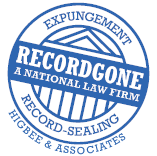Governor Jerry Brown recently signed into law Assembly Bill 651, which fills a critical gap in California’s expungement law. Under the new law, codified as Penal Code Section 1203.41, individuals sentenced under Felony Realignment, Penal Code Section 1170(h)(5), may be eligible to expunge the felony conviction from their criminal record.

Penal Code section 1203.41 is modeled on California’s felony probation expungement statute (PC 1203.4) and creates a similar process for people convicted under Felony Realignment of 2011. The “Criminal Justice Realignment Act of 2011” made significant changes to California’s criminal law by amending over 500 statutes. Realignment transferred the responsibility for supervising certain groups of felony offenders and parolees from state prisons and parole agents to county jails and probation officers. This was accomplished by creating new county jail sentences for lower-level felony offenses.
California’s existing expungement law, Penal Code section 1203.4, predates Realignment and does not apply to those sentenced under Penal Code 1170(h)(5). AB 651 bridges this gap by creating a parallel expungement process for those sentenced under Realignment, which went into effect on October 1, 2011.
Who Is Eligible To Expunge Their Felony Pursuant to PC 1203.41?
The requirements and process are very similar to felony probation expungements under PC 1203.4. To be eligible for an expungement, you must: (1) have served your sentence in county jail (not state prison), (2) have completed all terms of your sentence, and (3) not be facing any new charges or serving any other sentence. Additionally, for those sentenced under Realignment, PC 1203.41 requires that a waiting period must be satisfied.
There is a one-year waiting period if the judge imposed a “split sentence” under PC 1170(h)(5)(B), meaning that you served time in county jail and served a term of probation or supervision. If you were sentenced under PC 1170(h)(5)(A) and served your entire sentence in county jail with no supervision following your release, then there is a two-year waiting period before you are eligible to apply for expungement.
The relief provided through PC 1203.41 is the same as the relief provided by PC 1203.4. The defendant would be released from all penalties and disabilities resulting from the conviction, with just a few exceptions provided in the statute. Only individuals convicted of low-level crimes with no prior serious, violent, or sex offenses will be eligible for this relief.
This law fills a significant gap in California’s expungement law and allows more people to have their felony conviction expunged. With the passage of this law, these lower-level felony offenders that received a local sentence will be able to secure gainful employment and move forward with their lives.
To learn more about California expungement law, make sure to read our California record clearing page. All available expungement services are located on the right sidebar of the page.




2 Responses to California’s 1170 Felony Realignment Expungement Law